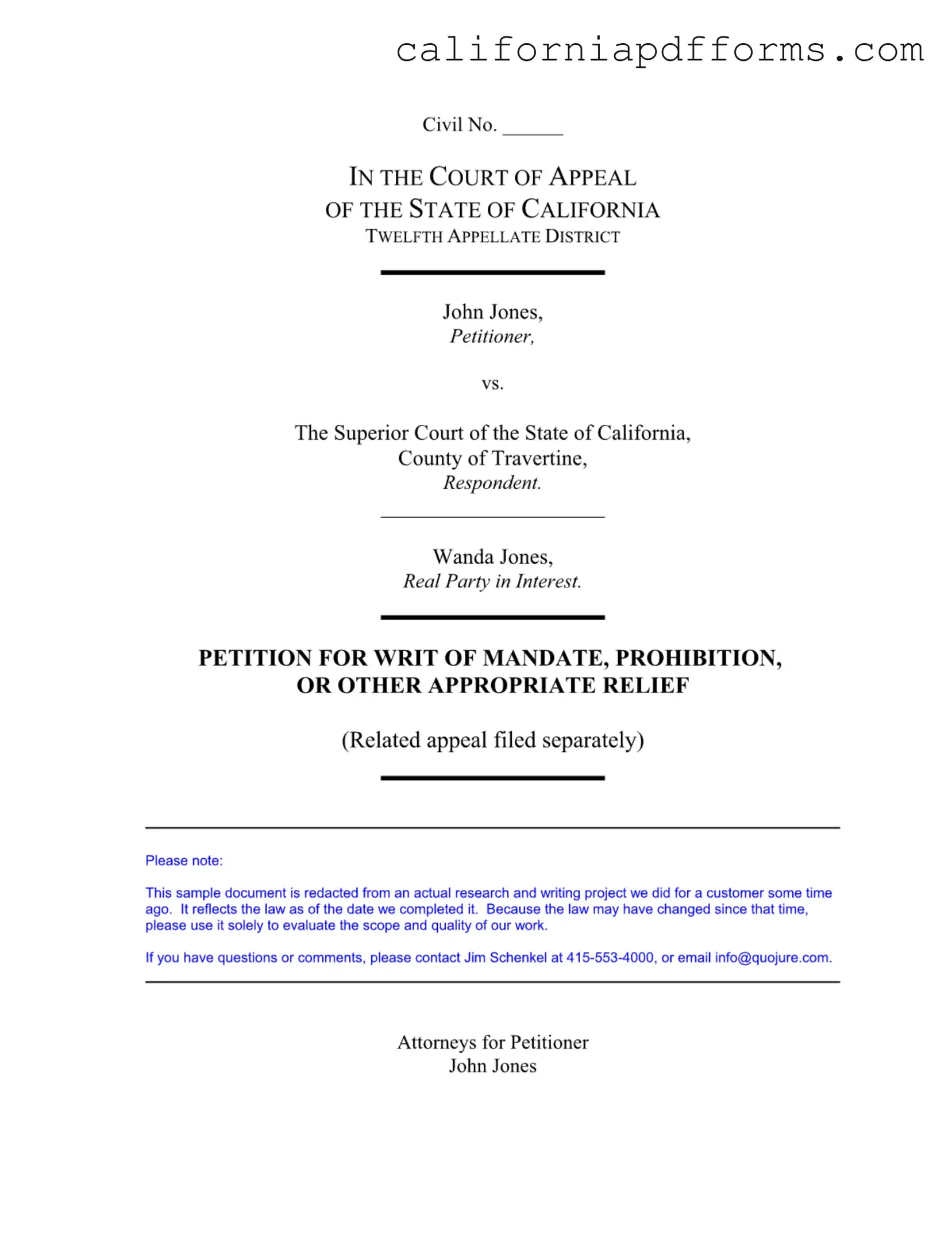What is a California Petition for Writ of Mandate?
A California Petition for Writ of Mandate is a legal document used to request a higher court to compel a lower court or government agency to perform a duty that it is legally obligated to perform. This type of petition is often filed when a party believes that a lower court has made an error or acted beyond its authority.
Who can file a Petition for Writ of Mandate?
Any individual or entity that has a direct interest in the case can file a Petition for Writ of Mandate. In family law cases, for example, a party involved in the proceedings, such as a parent or spouse, may file the petition if they believe their rights have been violated or that the court has made an erroneous ruling.
What are the key components of the petition?
A typical petition includes several essential components:
-
The title of the case, including the names of the parties involved.
-
A statement of the facts surrounding the case.
-
The specific legal arguments supporting the request for the writ.
-
A conclusion summarizing the relief sought.
What does the term "real party in interest" mean?
The "real party in interest" refers to the individual or entity that has a direct stake in the outcome of the case. In family law cases, this often involves parties like spouses or parents whose rights or obligations are affected by the court's decision.
How does the court decide whether to grant the petition?
The court will review the petition to determine if the petitioner has demonstrated a valid legal basis for the writ. The court will consider factors such as whether the lower court acted outside its authority, whether the petitioner was given a fair opportunity to present their case, and whether the petitioner's rights were violated.
What is the role of exhibits in the petition?
Exhibits are documents attached to the petition that provide evidence supporting the claims made. These may include court orders, transcripts, or other relevant documents that help establish the context and validity of the petitioner's arguments.
Is there a deadline for filing a Petition for Writ of Mandate?
Yes, there are deadlines for filing a Petition for Writ of Mandate. Generally, the petition must be filed within a reasonable time after the lower court's decision. Specific time limits can vary based on the type of case and the nature of the ruling being challenged, so it is crucial to consult with legal counsel to ensure compliance with deadlines.
What happens after the petition is filed?
After the petition is filed, the court will review it and may schedule a hearing. The parties involved may be required to submit additional documents or arguments. Ultimately, the court will issue a ruling either granting or denying the petition, which may include further instructions or orders.
Can a decision on the petition be appealed?
Yes, if the court denies the petition, the petitioner may have the option to appeal that decision. The appeals process will have its own set of rules and deadlines, so it is advisable to seek legal advice to understand the next steps.
